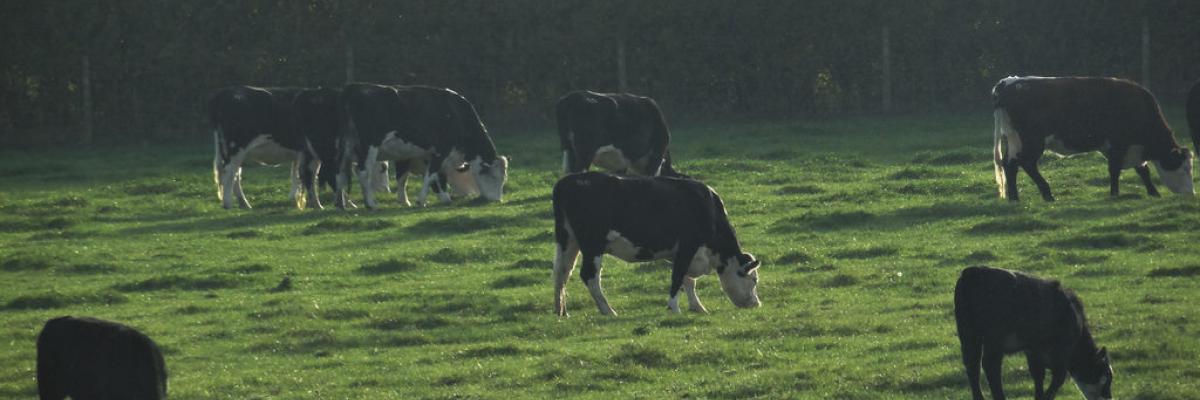

Intensive Grazing: Boode Farm
CSF Farm Business Benefits Case Study 7
Download the PDF
There is increasing evidence of the economic, environmental and animal welfare benefits that can come from more self-reliant farming systems. This case study by the Catchment Sensitive Farming (CSF) project outlines the benefits Devon farmer Gavin Fowler has achieved for the farm’s dairy enterprise from adopting a controlled grazing system that maximises grazing grass efficiently and reduces soil damage. Gavin applied a number of management approaches, in line with CSF principles, to introduce cow tracks, extend the grazing season while monitoring grass growth, and improve soil structure and slurry management. This enabled Gavin to reduce his use of external inputs, slurry storage and labour, and increase milk yield. The case study outlines the use of CSF measures to reduce water pollution and gives details on the business benefits for the farm’s grass, soil and cows, as well as the notable cost savings per litre of milk that he has achieved.
- An improved, controlled grazing system helps to:
- Ensure grass is used in the most efficient way;
- minimise waste;
- avoid poaching by cattle;
- reduce the housing period for cows and therefore volume of slurry produced;
- reduce reliance on conserved forage and slurry costs;
- create labour savings;
- & improve cow health and welfare.
- Grazing efficiency can be improved by choosing a cow breed suited to living outside for most of the year that will thrive on a grass-based diet.
- Regularly monitoring grass sward heights and planning the allocation of grass for each feed and the length of the grazing rotation will help ensure that cows make best use of the grass, and minimise any need for buffer feeding.
- An option for rejuvenating grass swards is to over-sow rather than plough and re-seed. This is cheaper, helps maintain soil structure, and reduces the risk of soil run-off or nutrient leaching.
- Well-constructed, maintained, and carefully planned cow tracks are essential in helping make the best use of grass, extend the grazing system, and minimise cow lameness.
- A key element of Gavin’s soil improvement programme has been to use soil aeration across the grazing platform.
